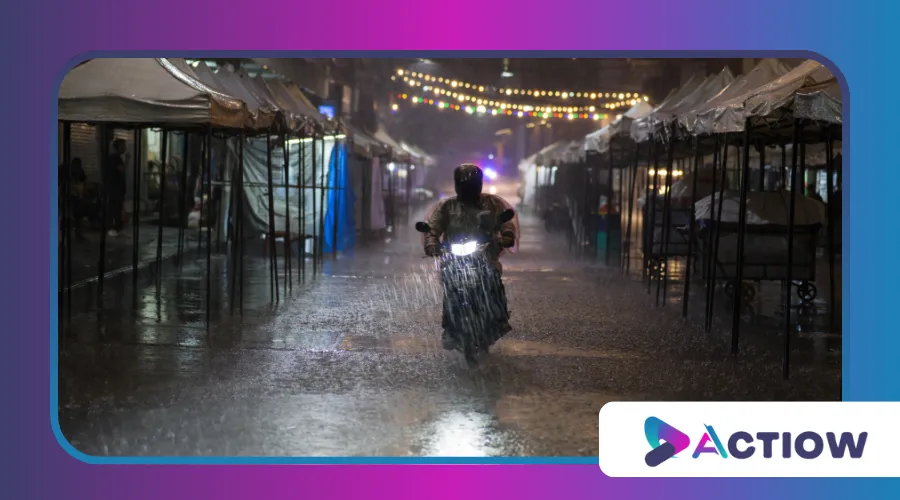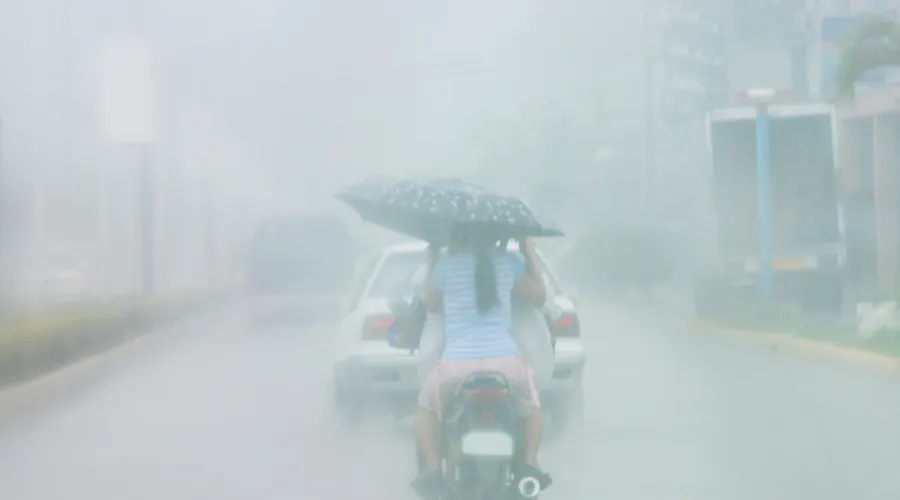How to Ride a Motorcycle in Bad Weather: A Survival Guide for Smart Riders

Anúncios
To ride a motorcycle in bad weather is one of the most challenging—and often unavoidable—experiences for bikers.
Whether it’s a sudden downpour, gusty winds, or slick roads, adverse conditions demand skill, preparation, and mental resilience.
Unlike fair-weather cruising, stormy rides require a tactical approach to ensure safety without sacrificing the thrill of two-wheeled freedom.
Anúncios
But how do you stay in control when the skies turn against you?
Let’s break it down.
1. The Psychology of Riding in Bad Weather: Mind Over Matter
Before even twisting the throttle, your mindset dictates success.
A study by the Motorcycle Safety Foundation (MSF) found that 62% of weather-related crashes occur due to rider hesitation or panic reactions.
Fear stiffens your movements, delays decisions, and disrupts balance—three things you can’t afford when traction is scarce.
Example: Imagine a seasoned sailor navigating rough seas.
They don’t fight the waves; they adjust their sails.
Similarly, a rider must adapt rather than resist.
This adaptability is crucial in bad weather, where every decision counts.
Taking a moment to breathe and assess the situation can make a significant difference in your reaction time and overall safety.
Understanding that fear is a natural response can help you manage it effectively, allowing for better decision-making under pressure.
2. Gear Up Like a Storm Chaser
If your helmet and jacket aren’t weather-ready, you’re already at a disadvantage.
Here’s what separates a fair-weather rider from a storm warrior:
Table 1: Essential Gear for Bad-Weather Riding
| Gear | Why It Matters |
|---|---|
| Waterproof Gloves | Maintains grip and prevents numbness |
| Anti-Fog Visor | Ensures clear vision in rain and humidity |
| Hi-Viz Jacket | Boosts visibility in low-light conditions |
| Rain Boots | Keeps feet dry and controls footpegs better |
Pro Tip: A pinlock visor insert is a game-changer—no more frantic wiping at stoplights.
Investing in high-quality gear not only enhances safety but also boosts confidence while riding.
When you know you’re protected against the elements, you can focus more on the road ahead.
Additionally, regular checks on your gear can ensure that everything functions as intended when you need it most.
For comprehensive gear reviews and recommendations, check out Cycle World.

3. Traction Tactics: The Art of Slick Surface Riding
Losing grip isn’t just a possibility; it’s a probability.
But here’s the catch: traction loss is manageable if you anticipate it.
- Avoid painted lines and manhole covers (they’re 3x slicker when wet).
- Modulate brakes gently—sudden stops invite fishtailing.
- Widen your stance—slightly bent knees act as natural suspension.
Analogy: Think of your tires as a chef’s knife.
A dull blade slips; a sharp one cuts clean.
Proper tire pressure and tread depth are your “sharpening stones.”
Regularly inspecting your tires for wear and tear is essential for maintaining optimal performance.
Adjusting your riding style to account for slippery surfaces can also help you maintain control.
For instance, learning to lean into turns rather than relying solely on braking can significantly enhance stability.
+ Adventure Motorcycles: The Best Bikes for Long Trips
4. The Invisible Enemy: Wind and Crosswinds
Rain isn’t the only hazard.
Gusts can turn your bike into an unwilling kite.
Countersteering is your ally.
Lean slightly into the wind while keeping a relaxed grip.
Fighting it only amplifies instability.
Example: A pro rider once described crosswinds like a boxing match—you don’t take the punch head-on; you roll with it.
Understanding how to read wind patterns can further enhance your riding strategy.
For instance, if you notice a pattern of gusts, adjusting your lane position can help mitigate their effects.
Practicing countersteering in a controlled environment can build confidence and improve your response in real situations.

5. Speed vs. Safety: The Wet Weather Trade-Off
Speed thrills, but in bad weather, it kills momentum—literally.
Hydroplaning begins at as low as 35 mph on worn tires.
Table 2: Safe Speed Adjustments for Weather Conditions
| Condition | Recommended Speed Reduction |
|---|---|
| Light Rain | 10-15% slower than usual |
| Heavy Downpour | 20-30% slower |
| Strong Crosswinds | 15-20% slower + lane positioning |
Adjusting your speed is not just about safety; it’s also about maintaining control and confidence.
Being aware of your surroundings and the conditions can help you make informed decisions about speed.
Additionally, practicing gradual braking and acceleration can help you adapt to changing conditions more effectively.
++ Top 10 Most Anticipated Cars of 2025: New Releases in the Market
6. Emergency Maneuvers: When Things Go South
Even experts get caught off guard.
Practice these in a controlled environment:
- Controlled slides: Learn to steer into a rear-wheel slide.
- Swerve-and-recover: Wet brakes respond slower—plan escape routes.
Rhetorical Question: If your back tire slips right now, do you instinctively know how to correct it?
Regularly practicing emergency maneuvers can prepare you for unexpected situations.
Consider enrolling in advanced riding courses that focus on handling emergencies in adverse conditions.
These skills can be invaluable, potentially saving your life when the unexpected occurs.
7. Post-Ride Maintenance: Saving Your Bike from the Elements
Rain and road grime accelerate wear.
Neglect leads to:
- Corroded chains (lubricate within 24 hours after riding wet).
- Brake fluid contamination (water lowers boiling points).
Regular maintenance checks can help prolong the life of your motorcycle and ensure it performs optimally.
Cleaning your bike after riding in bad weather not only protects it but also gives you a chance to inspect for any damage.
Developing a maintenance routine can save you time and money in the long run, keeping your ride in top shape.
Final Thought: Respect the Storm, Don’t Fear It
Riding a motorcycle in bad weather isn’t about recklessness—it’s about calculated control.
The best riders aren’t those who avoid storms, but those who navigate them with precision.
So next time the forecast frowns, ask yourself: Am I prepared to ride smarter, not just harder?
Embracing the challenges of bad weather can enhance your skills and confidence as a rider.
With the right mindset, gear, and techniques, you can turn a daunting ride into a rewarding experience.
Remember, every ride is an opportunity to learn and grow as a motorcyclist.
